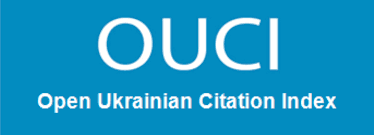Download full text in PDF
Msimang A, Tandlich R. Links between human and animal life in the Age of Anthropocene: From molecules, through reactions to cells, development and ethical implications. Bìol Tvarin. 2025; 27 (3): 3–19. DOI: 10.15407/animbiol27.03.003.
https://doi.org/10.15407/animbiol27.03.003
Received 22.04.2025 ▪ Revision 17.07.2025 ▪ Accepted 01.08.2025 ▪ Published online 22.10.2025
Links between human and animal life in the Age of Anthropocene: From molecules, through reactions to cells, development and ethical implications
Asante Msimang, Roman Tandlich
This email address is being protected from spambots. You need JavaScript enabled to view it.; This email address is being protected from spambots. You need JavaScript enabled to view it.
Rhodes University, Faculty of Pharmacy, Artillery Road, P.O. Box 94, Grahamstown/Makhanda 6140, South Africa
In the last two hundred years, discoveries in animal and human physiology, disease, and drug development have been made. Animals stood at the centre of the experiments to optimise the drug doses and administration routes. Human progress has been driven by various anthropogenic aims and desires. The knowledge development and discoveries continue to increase about the fundamental reality of human existence and the ontological realm in which the socio-ecological systems continue to evolve. Members of Homo sapiens have now reached an understanding, power of knowledge and actions which have the ability to influence the Earth’s ecosystem. This produces the by-products of human progress, e.g. CO2 and these have started to alter the fundamental/situational reality boundary of human existence and the ontological realm of the socio-ecological systems. Benefits and suffering of humans and animals, separately and together, can be viewed through various lenses, e.g. the precautionary principle. The current article uses the methodology which is a combination of bioethical analysis and a theoretical biology analysis of the precautionary principle and its implications into the relationship between human and broader socio-ecological systems. The principle can provide some guidance on ethical understanding of the duality of human actions during Anthropocene and the Great Acceleration and how it is linked to the very chemical essence of life. Humans develop their knowledge about the fundamental reality as part of their search for truth, for understanding of the chemical and other dimensions of the nature of life. This is ‘normal science’, i.e. the search for ‘truth’ or human understanding of fundamental reality of existence, moves humanity forward. However, its deployment for human development creates by-products that require ‘regulatory science’, or settings of rules for regulation of the deployment of the normal-science-derived knowledge. An examples of this can be the need to take action and to mitigate the climate change impacts across the globe, impacts on both human and animal life.
Key words: precautionary principle, levels of biological organisation, ethical framework
- Aasfar A, Bargaz A, Yaakoubi K, Hilali A, Bennis I, Zeroual Y, Meftah Kadmiri I. Nitrogen fixing Azotobacter species as potential soil biological enhancers for crop nutrition and yield stability. Front Microbiol. 2021; 12: 628379. DOI: 10.3389/fmicb.2021.628379.
- Adedeji WA. The treasure called antibiotics. Ann Ib Postgrad Med. 2016; 14 (2): 56–57. PMID: 28337088.
- Ahern K, Rajagopal I. Propionyl-CoA-carboxylase. Libretexts Biology. 2024. Available at: https://bio.libretexts.org/Bookshelves/Biochemistry/Book%3A_Biochemistry_Free_and_Easy_(Ahern_and_Rajagopal)/06%3A_Metabolism_I_-_Oxidative_Reductive_Processes/6.11%3A_Fatty_Acid_Oxidation (last access 6th September 2025)
- Almanza-Hurtado A, Polanco Guerra C, Martínez-Ávila MC, Borré-Naranjo D, Rodríguez-Yanez T, Dueñas-Castell C. Hypercapnia from Physiology to Practice. Int J Clin Pract. 2022; 2022: 2635616. DOI: 10.1155/2022/2635616.
- Andersson MI, MacGowan AP. Development of the quinilones. J Antimicrob Chemother. 2003; 51 (1): 1–11. DOI: 10.1093/jac/dkg212.
- Ayala FJ. Darwin’s greatest discovery: Design without designer. In: Avise JC, Ayala FJ (eds). In the Light of Evolution: Volume I: Adaptation and Complex Design. National Academies Press (US), 2007: NBK254313. Available at: https://www.ncbi.nlm.nih.gov/books/NBK254313 (last access 31st August 2025)
- Biogeochemical Cycles. In: Fisher MR (ed). Environmental Biology. Open Oregon Educational Resources, 2017. Ebook ISBN 978-1-63635-036-3, print ISBN 978-1-63635-037-0. Available at: https://openoregon.pressbooks.pub/envirobiology/chapter/3-2-biogeochemical-cycles (last access 7th September 2025).
- Callegan MC, Ramirez R, Kane ST, Cochran DC, Jensen H. Antibacterial activity of the fourth-generation fluoroquinolones gatifloxacin and moxifloxacin against ocular pathogens. Adv Therapy. 2003; 20 (5): 246–252. DOI: 10.1007/BF02849853.
- Climate change and health. World Health Organisation. 2021. Available at: https://www.who.int/news-room/fact-sheets/detail/climate-change-and-health (last access 6th September 2025).
- Cooper AJL. The role of glutamine synthetase and glutamate dehydrogenase in cerebral ammonia homeostasis. Neurochem Res. 2012; 37 (11): 2439–2455. DOI: 10.1007/s11064-012-0803-4.
- Crnĉević T, Lovren VO. Displacement and climate change: Improving planning policy and increasing community resilience. Int J Clim Change Strateg Managem. 2017; 10 (1): 105–120. DOI: 10.1108/IJCCSM-05-2017-0103.
- Davis RS. What is a kilogram in the revised international system of units (SI)? J Chem Ed. 2015; 92 (10): 1604–1609. DOI: 10.1021/acs.jchemed.5b00285.
- Devi NS, Mythili R, Cherian T, Dineshkumar R, Sivaraman GK, Jayakumar R, Prathaban M, Duraimurugan M, Chandrasekar V, Peijnenburg WJGM. Overview of antimicrobial resistance and mechanisms: The relative status of the past and current. Microbe. 2024; 3: 100083. DOI: 10.1016/j.microb.2024.100083.
- Else H. Genomics institute to close world-leading animal facility. Nature. 2019; 569 (7758): 612. DOI: 10.1038/d41586-019-01685-7.
- Erhirhie EO, Ihekwereme CP, Ilodigwe EE. Advances in acute toxicity testing: strengths, weaknesses and regulatory acceptance. Interdiscipl Toxicol. 2018; 11 (1): 5–12. DOI: 10.2478/intox-2018-0001.
- Escandon R. Considering the duality of nitrogen. Hastings Center Bioeth. 2024. Available at: https://www.thehastingscenter.org/considering-the-duality-of-nitrogen (last access 6th September 2025)
- FDA Drug Safety Communication: FDA advises restricting fluoroquinolone antibiotic use for certain uncomplicated infections; warns about disabling side effects that can occur together. United States Food and Drug Administration. 2016. Available at: https://www.fda.gov/drugs/drug-safety-and-availability/fda-drug-safety-communication-fda-advises-restricting-fluoroquinolone-antibiotic-use-certain (last access 5th September 2025)
- Fleming A. On the antibacterial action of cultures of a Penicillium, with special reference to their use in the isolation of B. influenzæ. British J Exp Pathol. 1929; 10 (3): 226–236. DOI: 10.1093/clinids/2.1.129.
- Gillings MR, Paulsen IT. Microbiology of the Anthropocene. Anthropocene. 2014. 5: 1–8. DOI: 10.1016/j.ancene.2014.06.004.
- Gómez-Márquez J. What are the principles that govern life? Commun Integr Biol. 2020; 13 (1): 97–107. DOI: 10.1080/19420889.2020.1803591.
- Gray R. Review Essay: Hans Jonas, The Imperative of responsibility: In search of an ethics for the technological age. Human Stud. 1988; 11 (4): 419–429. DOI: 10.1007/BF00142889.
- Harari YN. A new human agenda. In: Harari YN. Homo deus: A brief history of tomorrow. HarperCollins, New York, NY, USA, 2016. ISBN 978-191-070-187-4.
- Hopkins E, Sanvictores T, Sharma S. Physiology, acid base balance. In: StatPearls. Treasure Island (FL), StatPearls Publishing, 2022. Available at: https://www.ncbi.nlm.nih.gov/books/NBK507807 (last access 6th September 2025)
- Iheanetu CU, Maguire KA, Moricová V, Tandlich R, Alloggio S. Utilitarian qubit, human geography, and pandemic preparedness in the 21st century. Sustainability. 2023; 15 (1): 321. DOI: 10.3390/su15010321.
- Johnson R. Kant’s Moral Philosophy. Standford Encyclopedia of Philosophy. 2004–2021. Available at: https://plato.stanford.edu/entries/kant-moral (last access 3rd September 2025)
- Kant I. Groundwork of the metaphysics of morals. M. Gregor (transl.). Cambridge University Press, 1785.
- Kelly S. The continuing evolution of publishing in the biological sciences. Biology Open. 2018; 7 (8): bio037325. DOI: 10.1242/bio.037325.
- Kergaravat SV, Hernández SR, Gagneten AM. Second-, third- and fourth-generation quinolones: Ecotoxicity effects on Daphnia and Ceriodaphnia species. Chemosphere. 2021; 262: 127823. DOI: 10.1016/j.chemosphere.2020.127823.
- Kohli R. Applications of solid carbon dioxide (dry ice) pellet blasting for removal of surface contaminants. In: Kohli R, Mittal KL (eds.) Developments in Surface Contamination and Cleaning: Applications of Cleaning Techniques. Elsevier BV, 2019: 117–169. DOI: 10.1016/B978-0-12-815577-6.00004-9.
- Langford NJ. Carbon dioxide poisoning. Toxicol Rev. 2005; 24 (4): 229–235. DOI: 10.2165/00139709-200524040-00003.
- Leenhouts HP, Chadwick KH. The molecular basis of stochastic and nonstochastic effects. Health Phys. 1989; 57 (1): 343–348. DOI: 10.1097/00004032-198907001-00048.
- Mandell L, Tillotson G. Safety of fluoroquinolones: An update. Canad J Infect Dis. 2002; 13 (1): 54–61. DOI: 10.1155/2002/864789.
- Michalak K, Sobolewska-Włodarczyk A, Włodarczyk M, Sobolewska J, Woźniak P, Sobolewski B. Treatment of the fluoroquinolone-associated disability: The pathobiochemical implications. Oxid Med Cell Longev. 2017; 2017: 8023935. DOI: 10.1155/2017/8023935.
- Monkey laboratories shutting down across the globe. Cruelty Free International. 2015. Available at: https://crueltyfreeinternational.org/latest-news-and-updates/monkey-laboratories-shutting-down-across-globe (last access 8th September 2025)
- Morrissey RE, Eustis S, Haseman JK, Huff J, Bucher JR. Toxicity and carcinogenicity studies of nalidixic acid in rodents. Drug Chem Toxicol. 1991; 14 (1–2): 45–66. DOI: 10.3109/01480549109017868.
- Nationally Determined Contributions Registry. United Nations Climate Change. Available at: https://unfccc.int/NDCREG (last access 6th September 2025)
- Nordhaus W. Revisiting the social cost of carbon. Proc Nat Acad Sci. 2017; 14 (7): 1518–1523. DOI: 10.1073/pnas.1609244114.
- Norman GA. Limitations of animal studies for predicting toxicity in clinical trials: Is it time to rethink our current approach? JACC BTS. 2019; 4 (7): 845–854. DOI: 10.1016/j.jacbts.2019.10.008.
- Obradovich N, Rahwan I. Risk of a feedback loop between climatic warming and human mobility. J Royal Soc Interface. 2019; 16 (158): 20190058. DOI: 10.1098/rsif.2019.0058.
- Occhipinti R, Boron WF. Role of carbonic anhydrases and inhibitors in acid-base physiology: Insights from mathematical modeling. Int J Mol Sci. 2019; 20 (15): 3841. DOI: 10.3390/ijms20153841.
- Pham TDM, Ziora ZM, Blaskovich MAT. Quinolone antibiotics. Med Chem Commun. 2019; 10: 1719–1739. DOI: 10.1039/C9MD00120D.
- Photosynthesis. Libretexts Biology. Available at: https://bio.libretexts.org/Bookshelves/Cell_and_Molecular_Biology/Book%3A_Basic_Cell_and_Molecular_Biology_%28Bergtrom%29/07%3A_Electron_Transport_Oxidative_Phosphorylation_and_Photosynthesis/7.04%3A_Photosynthesis (last access 7th September 2025)
- Plaitakis A, Kalef-Ezra E, Kotzamani D, Zaganas I, Spanaki C. The glutamate dehydrogenase pathway and its roles in cell and tissue biology in health and disease. Biology. 2017; 6 (1): 11. DOI: 10.3390/biology6010011.
- Precautionary Principles. Internet Encyclopaedia of Philosophy. Available at: https://iep.utm.edu/pre-caut/#SSH2bii (last access 6th September 2025)
- Raffensperger C, Tickner JA. Protecting public health and the environment: Implementing the precautionary principle. Island Press, 2013: 411 p. ISBN 9781610913034.
- Rhie A, McCarthy SA, Fedrigo O, Damas J, Formenti G, Koren S, Uliano-Silva M, Chow W, Fungtammasan A, Kim J, Lee C, Ko BJ, Chaisson M, Gedman GL, Cantin LJ, Thibaud-Nissen F, Haggerty L, Bista I, Smith M, Haase B, Mountcastle J, Winkler S, Paez S, Howard J, Vernes SC, Lama TM, Grutzner F, Warren WC, Balakrishnan CN, Burt D, George JM, Biegler MT, Iorns D, Digby A, Eason D, Robertson B, Edwards T, Wilkinson M, Turner G, Meyer A, Kautt AF, Franchini P, William Detrich H III, Svardal H, Wagner M, Naylor GJP, Pippel M, Malinsky M, Mooney M, Simbirsky M, Hannigan BT, Pesout T, Houck M, Misuraca A, Kingan SB, Hall R, Kronenberg Z, Sović I, Dunn C, Ning Z, Hastie A, Lee J, Selvaraj S, Green RE, Putnam NH, Gut I, Ghurye J, Garrison E, Sims Y, Collins J, Pelan S, Torrance J, Tracey A, Wood J, Dagnew RE, Guan D, London SE, Clayton DF, Mello CV, Friedrich SR, Lovell PV, Osipova E, Al-Ajli FO, Secomandi S, Kim H, Theofanopoulou C, Hiller M, Zhou Y, Harris RS, Makova KD, Medvedev P, Hoffman J, Masterson P, Clark K, Martin F, Howe K, Flicek P, Walenz BP, Kwak W, Clawson H, Diekhans M, Nassar L, Paten B, Kraus RHS, Crawford AJ, Gilbert MTP, Zhang G, Venkatesh B, Murphy RW, Koepfli KP, Shapiro B, Johnson WE, Di Palma F, Marques-Bonet T, Teeling EC, Warnow T, Graves JM, Ryder OA, Haussler D, O’Brien SJ, Korlach J, Lewin HA, Howe K, Myers EW, Durbin R, Phillippy AM, Jarvis ED. Towards complete and error-free genome assemblies of all vertebrate species. Nature. 2021; 592: 737–746. DOI: 10.1038/s41586-021-03451-0.
- Rio Declaration on Environment and Development. Report of the United Nations conference on environment and development, Rio de Janeiro, 1992, 3–14 June; A/CONF.151/26 (I). United Nations General Assembly, 1992. Available at: https://www.un.org/en/development/desa/population/migration/generalassembly/docs/globalcompact/A_CONF.151_26_Vol.I_Declaration.pdf
- Rodrigues CF, Silva F. The rise, fall, and rethink of (fluoro)quinolones: A Quick rundown. Pathogens. 2025; 14 (6): 525. DOI: 10.3390/pathogens14060525.
- Rodríguez-Martínez J, Pichardo C, García I, Pachón-Ibañez M, Docobo-Pérez F, Pascual A, Pachón J, Martínez-Martínez L. Activity of ciprofloxacin and levofloxacin in experimental pneumonia caused by Klebsiella pneumoniae deficient in porins, expressing active efflux and producing QnrA1. Clin Microbiol Infect. 2008; 14 (7): 691–697. DOI: 10.1111/j.1469-0691.2008.02020.x.
- Rossiter D. (ed.) South African Medical Formulary. 14th ed. Cape Town, South Africa, 2016.
- Sansone JM, Wilsman NJ, Leiferman EM, Conway J, Hutson P, Noonan KJ. The effect of quinolone antibiotics on growing cartilage in the lamb model. J Ped Orthoped. 2009; 29 (2): 189–195. DOI: 10.1097/BPO.0b013e3181982c4f.
- Scheld WM. Evaluation of quinolones in experimental animal models of infections. Eur J Clin Microbiol Infect Dis. 1991; 10 (4): 275–290. DOI: 10.1007/BF01967001.
- Schluter G. Ciprofloxacin: Toxicologic evaluation of additional safety data. Am J Med. 1989; 87 (5/1): 37S–39S. DOI: 10.1016/0002-9343(89)90018-1.
- Scovronick N, Budolfson MB, Denning F, Fleurbaey M, Siebert A, Socolow RH, Spears D, Wagner F. Impact of population growth and population ethics on climate change mitigation policy. Proc Nat Acad Sci. 2017; 114 (46): 12338–12343. DOI: 10.1073/pnas.1618308114.
- Serwacki P, Gajda M, Świątek-Kwapniewska W, Wałaszek M, Nowak K, Wójkowska-Mach J. Re-evaluating the suitability of using fluoroquinolones in the treatment of infections in the context of FQ consumption and correlating changes to microorganism resistance levels in EU/EEA countries between 2016 and 2021. Naunyn-Schmiedeberg Arch Pharmacol. 2024; 397: 795–805. DOI: 10.1007/s00210-023-02622-2.
- SI base unit: kilogram (kg). Bureau International des Poids at Mesures (BIPM). Available at: https://www.bipm.org/en/si-base-units/kilogram#:~:text=The%20kilogram%2C%20symbol%20kg%2C%20is,of%20c%20and%20%CE%94%CE%BDCs (last access 31st August 2025)
- Stuart P, Slavin G. Toxicity of penicillin to guinea pigs. Nature. 1951; 167: 319–320. DOI: 10.1038/167319b0.
- 17 Sustainable Development Goals. United Nations. Department of Economic and Social Affairs. Sustainable Development. 2015. Available at: https://sdgs.un.org/goals (last access 6th September 2025)
- Talukder B, Ganguli N, Matthew R, van Loon GW, Hipel KW, Orbinski J. Climate change-accelerated ocean biodiversity loss & associated planetary health impacts. J Clim Change Health. 2022; 6: 100114. DOI: 10.1016/j.joclim.2022.100114.
- Tan SY, McCoy AN. James Dewey Watson (1928-): Co-discoverer of the structure of DNA. Singapore Med J. 2020; 61 (10): 507–508. DOI: 10.11622/smedj.2020145.
- Tanga CTF, Makouloutou-Nzassi P, Mbehang Nguema PP, Düx A, Lendzele Sevidzem S, Mavoungou JF, Leendertz FH, Mintsa-Nguema R. Antimicrobial resistance in African Great Apes. Antibiotics. 2024; 13 (12): 1140. DOI: 10.3390/antibiotics13121140.
- The Paris Agreement: What is the Paris Agreement? United Nations Climate Change. Available at: https://unfccc.int/process-and-meetings/the-paris-agreement (last access 6th September 2025)
- Venter JC. First minimal synthetic bacterial cell. J. Craig Venter Institute. 2007. Available at: https://www.jcvi.org/research/first-minimal-synthetic-bacterial-cell (last access 2nd September 2025)
- Villar D, Buck WB, Gonzalez JM. Ibuprofen, aspirin and acetaminophen toxicosis and treatment in dogs and cats. Vet Hum Toxicol. 1998; 40 (3): 156–162. PMID: 9610496.
- Wilson JG, Ritter EJ, Scott WJ, Fradkin R. Comparative distribution and embryotoxicity of acetylsalicylic acid in pregnant rats and rhesus monkeys. Toxicol Appl Pharmacol. 1977; 41 (1): 67–78. DOI: 10.1016/0041-008X(77)90054-0.
- Xu C, Kohler TA., Lenton TM, Svenning JC, Scheffer M. Future of the human climate niche. Proc Nat Acad Sci. 2020; 117 (21): 11350–11355. DOI: 10.1073/pnas.1910114117.
- Zak O, O’Reilly T. Animal models in the evaluation of antimicrobial agents. Antimicrob Agent Chemother. 1991; 35 (8): 1527–1531. DOI: 10.1128/AAC.35.8.1527.














